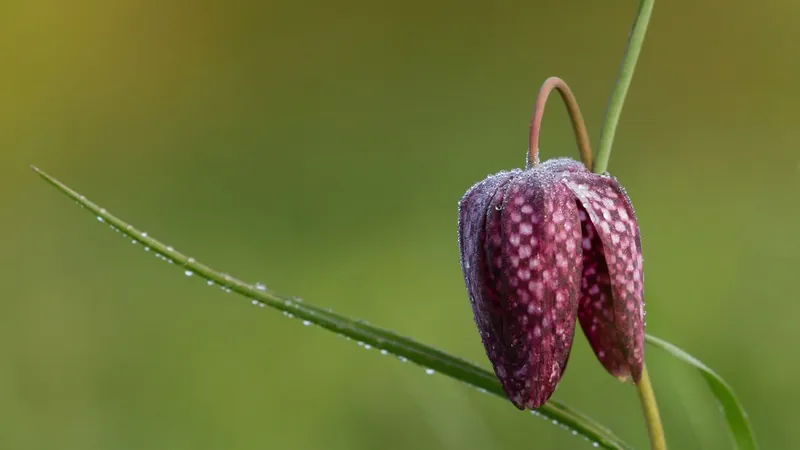
Transform Your Spring Garden: The Art of Growing Snake's Head Fritillaries for Stunning, Checkerboard Blooms!
2024-11-11
Author: Benjamin
Why You Should Plant Snake's Head Fritillaries
Originating from central and northern Europe, the snake's head fritillary (Fritillaria meleagris) emerges from modest bulbs that start sprouting green shoots as early as March, culminating in mesmerizing, nodding flowers by April and May. For gardeners seeking an easy-to-maintain yet eye-catching addition, this hardy bulb is a fantastic choice that promises to return year after year.
How to Cultivate Snake's Head Fritillaries
Perfect Timing: Plant your fritillary bulbs from September to November to ensure they bloom the following spring. While they may not be as mainstream as tulips or daffodils, these unusual bulbs will definitely add that coveted 'wow' factor to your yard.
Essential Growing Tips
1. Soil Requirements: Snake's head fritillaries thrive in moist, well-drained soil. They love slightly damp conditions typically found in meadows. Enrich your soil with compost or well-rotted manure to enhance moisture retention and drainage. Aim for a slightly acidic to neutral pH level (6.0-7.0) for optimal growth.
2. Light Preferences: These beauties prefer partial shade, benefiting from morning sunlight while being shielded from the harsh afternoon rays to prevent wilting.
3. Watering Needs: Keep the soil consistently moist throughout their growing season (from fall to spring) but avoid over-watering. In most cases, autumn rains will suffice.
4. Fertilization: While fritillaries are adept at sourcing nutrients from the soil, applying a balanced, slow-release fertilizer in early spring can boost blooming. Be cautious not to overfeed, as it can lead to lush fern-like foliage with fewer blooms.
5. Pruning Note: There’s no need for pruning. Let the foliage die back naturally in summer to store energy for next year’s growth. Leaving some flowers to seed will help naturalize them in your lawn.
A Word of Caution
All parts of the snake's head fritillary are toxic to both humans and pets due to harmful alkaloids. Use gloves while handling and keep a watchful eye on children and animals in the vicinity.
Dealing with Pests
Be aware that slugs and snails find these flowers irresistible, especially during wet springs. Keep an eye out for them or other pests like red lily beetles, which may munch away on the foliage. Hand-picking these nuisances is an effective control method.
Variety Recommendations
For enchanting purple blooms, consider the ‘Saturnus’ or ‘Mars’ variety. If white is more your style, the classic ‘Alba’ is stunning.
Additionally, for something taller with a dramatic flair, try Fritillaria persica, with flower stalks that can reach up to three feet.
Container Gardening Tip
Yes, you can grow snake's head fritillaries in pots! Opt for deep containers with ample drainage, and consider mixing potting soil with sand or grit for optimal moisture levels. Just remember to keep these pots well-watered during the active growing season.
Conclusion
With these insights, you’re well on your way to creating a breathtaking spring spectacle in your garden with the gorgeous snake's head fritillary. Plant now and watch the magic unfold next year!









 Brasil (PT)
Brasil (PT)
 Canada (EN)
Canada (EN)
 Chile (ES)
Chile (ES)
 España (ES)
España (ES)
 France (FR)
France (FR)
 Hong Kong (EN)
Hong Kong (EN)
 Italia (IT)
Italia (IT)
 日本 (JA)
日本 (JA)
 Magyarország (HU)
Magyarország (HU)
 Norge (NO)
Norge (NO)
 Polska (PL)
Polska (PL)
 Schweiz (DE)
Schweiz (DE)
 Singapore (EN)
Singapore (EN)
 Sverige (SV)
Sverige (SV)
 Suomi (FI)
Suomi (FI)
 Türkiye (TR)
Türkiye (TR)